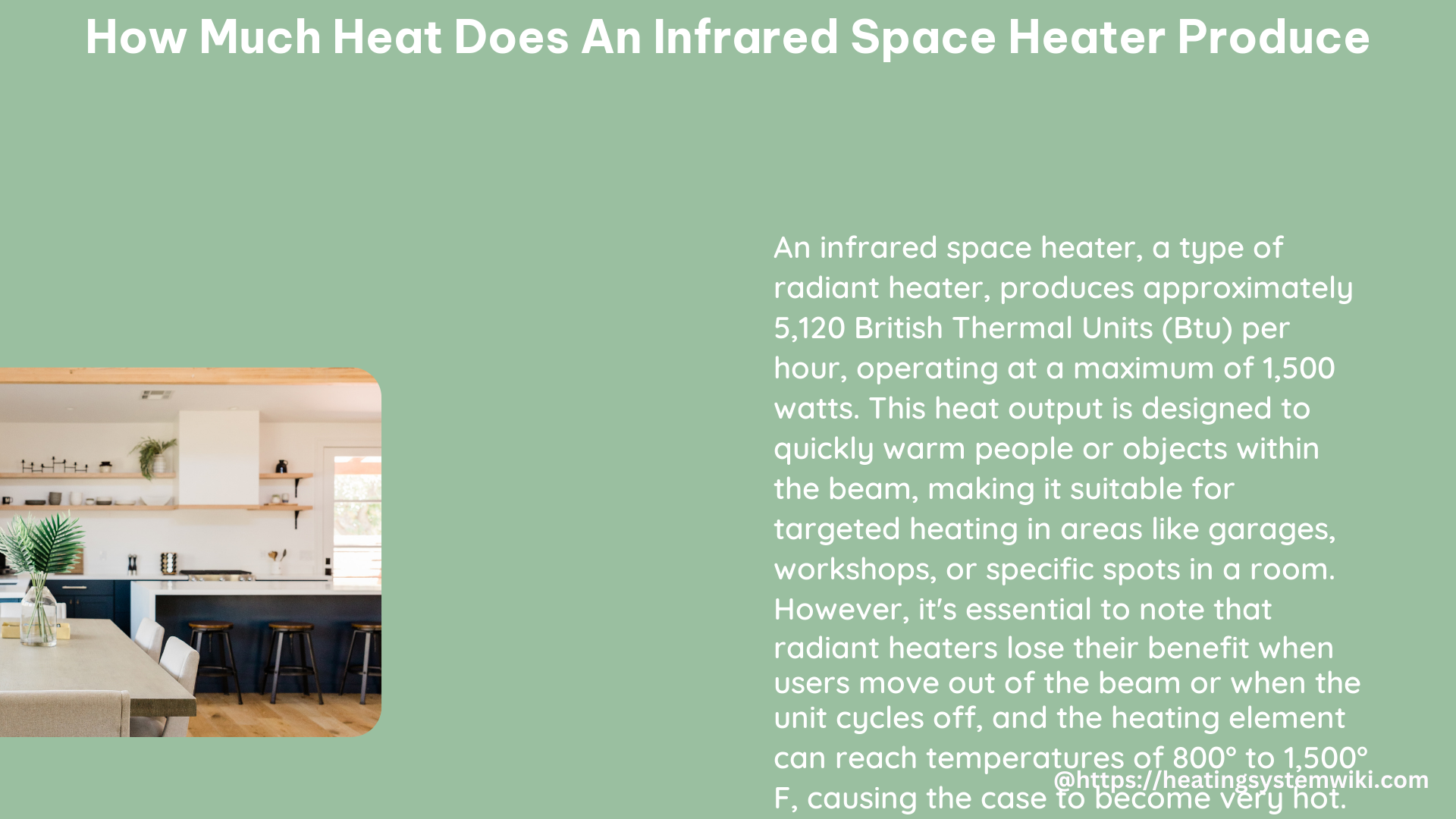Infrared space heaters are a popular choice for supplemental heating in homes and offices due to their energy efficiency and targeted heating capabilities. These heaters work by converting electrical energy into infrared radiation, which then directly warms objects and people in the surrounding area. But just how much heat can an infrared space heater produce? Let’s dive into the details.
Understanding Infrared Space Heater Heat Output
The heat output of an infrared space heater is typically measured in watts, with most models ranging from 1,000 to 1,500 watts. This means that a 1,500-watt infrared space heater can produce 1,500 watts of heat per hour, or 12,000 watt-hours (Wh) of heat over an 8-hour period.
To put this into perspective, one watt-hour is the amount of energy used to power a 1-watt device for one hour. So, a 12,000 Wh heat output from an infrared space heater is enough to power a 100-watt light bulb for 120 hours or a 1,500-watt space heater for 8 hours.
It’s important to note that the actual heat output of an infrared space heater can vary depending on several factors, including:
-
Heat Settings: Many infrared space heaters have adjustable heat settings, allowing you to control the amount of heat produced. Higher settings will result in more heat output.
-
Model Efficiency: Some infrared space heater models may be more energy-efficient than others, which can affect the overall heat output.
-
Room Size: The size of the space you’re trying to heat will also play a role in the heat output required. Larger spaces may need a more powerful heater to achieve the desired temperature.
Factors to Consider When Choosing an Infrared Space Heater

When selecting an infrared space heater for your needs, there are several important factors to consider:
-
Wattage: As mentioned, most infrared space heaters range from 1,000 to 1,500 watts. Choose a wattage that matches the size of the space you need to heat. Smaller spaces may only require a 1,000-watt heater, while larger areas may need a 1,500-watt or even higher-wattage model.
-
Energy Efficiency: Look for infrared space heaters with high energy efficiency ratings. These models will use less electricity to produce the same amount of heat, saving you money on your energy bills.
-
Safety Features: Ensure the infrared space heater you choose has important safety features, such as automatic shut-off switches and tip-over protection, to prevent accidents and ensure safe operation.
-
Heating Area: Check the manufacturer’s recommended heating area for each infrared space heater model to ensure it can effectively heat the space you need.
-
Noise Level: Some infrared space heaters may produce more noise than others, so consider the noise level if this is a concern for your space.
Maximizing the Efficiency of Your Infrared Space Heater
To get the most out of your infrared space heater and maximize its heat output, consider the following tips:
-
Placement: Position the heater in an open, unobstructed area to ensure the infrared radiation can effectively reach the desired space.
-
Insulation: Ensure the room or area you’re heating is well-insulated to prevent heat loss and maximize the heater’s efficiency.
-
Thermostat Control: Use the heater’s thermostat to maintain a comfortable and consistent temperature, rather than running it at full power continuously.
-
Supplemental Heating: Combine the use of your infrared space heater with other energy-efficient heating methods, such as proper insulation and weatherproofing, to further improve overall heating efficiency.
By understanding the heat output capabilities of infrared space heaters and considering the key factors when choosing and using one, you can ensure your supplemental heating needs are met effectively and efficiently.
